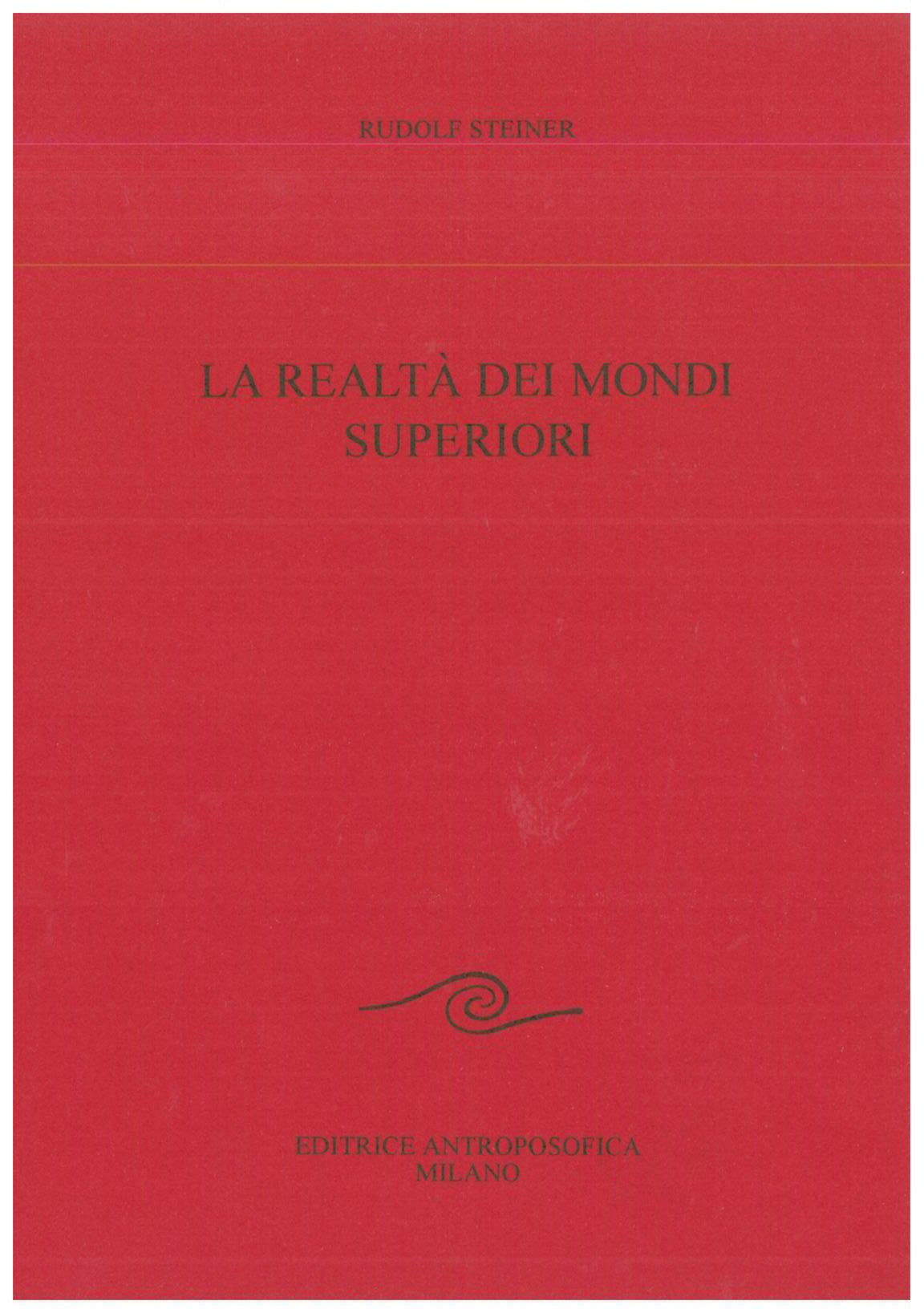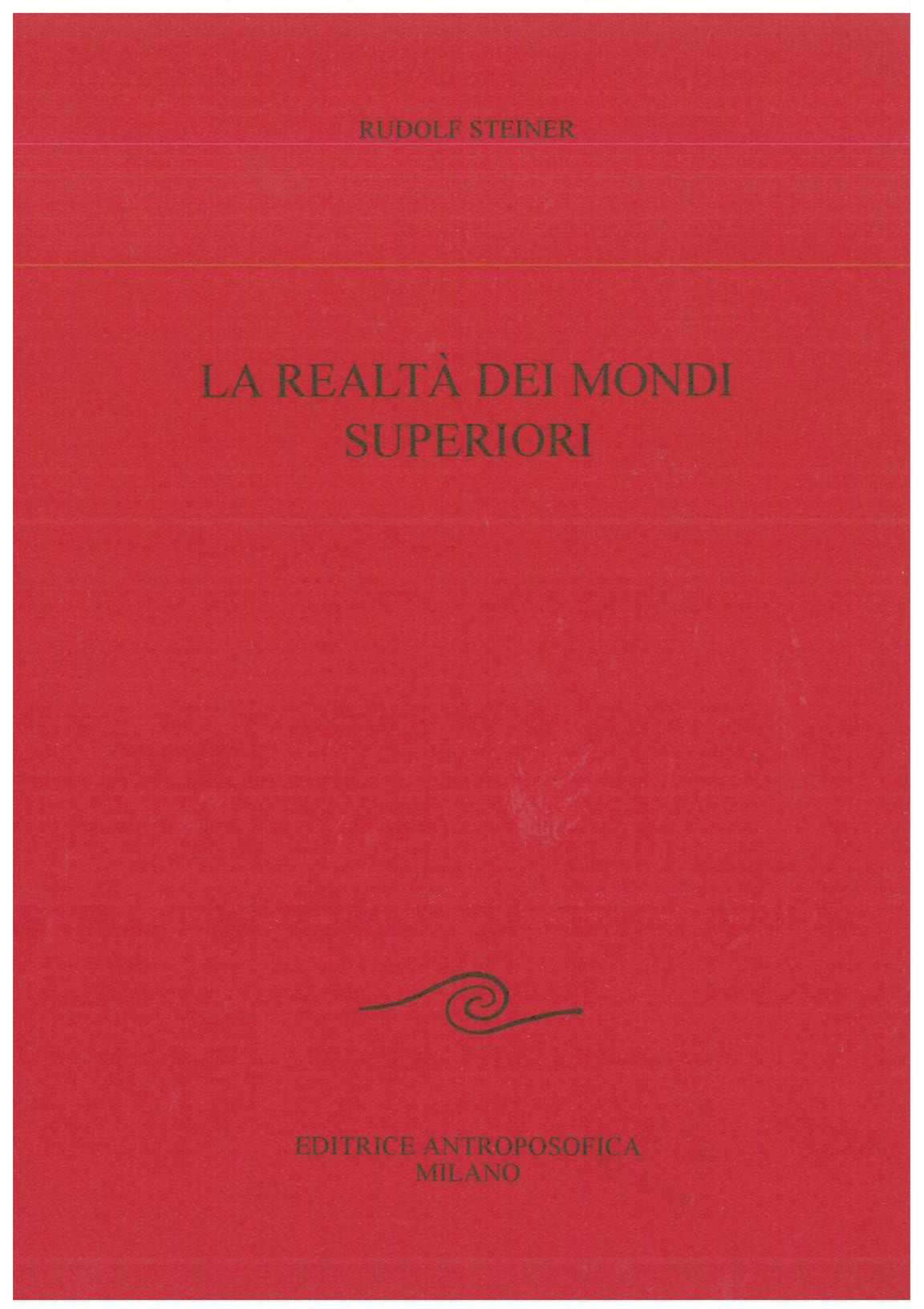79- The reality of the higher worlds - Rudolf Steiner
Have a question?

79- The reality of the higher worlds - Rudolf Steiner
Dettagli
The fundamental concepts of anthroposophy exposed in public conferences: free spiritual life, superior knowledge, the constitution of man, cosmic evolution, cultural renewal, the Christ event, social tripartition.
INDEX:
First conference...................................Oslo, 25 November 1921
The reality of the superior worlds - Free life of the spirit and spiritual condition of the present The methods of anthroposophy and science. Philosophy and mysticism. World of senses and memories. Strengthening thoughts with meditation. The limits of knowledge and imaginative thinking. Mnemonic framework and empty consciousness. Yoga. Moral preparation. Intuition. Destiny and reincarnation. Freedom and necessity. Goetheanum. Eurythmy. Effects on social, moral and religious life.
Second conference................................Oslo, 6 November 1921
The ways to knowledge of the higher worlds
Training of thinking. Imaginative knowledge. Mnemonic framework. Elimination of representations. Goethe and the concept of metamorphosis. Space and time in the afterlife. The eternal germ of man. Strengthening of moral forces. New architectural style. Eurythmy. Waldorf School.
Third conference.................................Oslo, 28 November 1921
The foundations of anthroposophy
Karl Ludwig Schleich. Oliver Lodge and the medium. Examination of their claims. Memory and sensory perception. Desire and will. St. Teresa and John of the Cross. Self-education. Falling asleep and waking up. Continuity of consciousness. Birth and death.
Fourth conference................................Oslo,29 November 1921
Man in the light of anthroposophy
Telepathy, telekinesis, teleplasty. Visions and hallucinations. See prenatal locations. Knowledge of reincarnations. Feelings and will overcome the door of death. The dream. Schrenck-Notzing. Strengthening of thought, feeling and will. Thinking backwards and mnemonic framework. Life backwards after death. Destiny. Moral fantasy. Incarnation of man.
Fifth conference................................Oslo, 1 December 1921
The evolution of the world in the light of anthroposophy
More intense internal experience. Loneliness. The meeting of people linked by destiny. Mineral world and thoughts. Thoughts after death and the memory of earthly life. Evolution of man and Earth. Human and animal figure. Human head and animal series. Morality and religion in science. The event of Golgotha.
Sixth conference.................................Oslo, 2 December 1921
The need for a renewal of civilization
Souls who seek, especially young people. Different soul attitude in recent centuries. Intellectualism. Faith in natural events. Aspirations for social and religious renewal. Contrasts between old people and young people. Mechanization of life. Karl Marx. Triarticulation. Humanization of social life. Religious renewal.
Seventh conference................................Oslo, 29 November 1921
Jesus or Christ
The world of ideas filled with the spirit of the past. Christology reduced to the study of the life of Jesus. Ranke. Anthroposophical impulses in the ethical-religious and physical worlds. Evil. God-Father. Atheism. Harnack. Failure to experience Christ. Soloviev. The Therapists. Jesus and Christ. The vision of the apostles. The Damascus experience. Renewal of Christianity.
Eighth conference................................Oslo, 30 November 1921
The fundamental problem of economic life
Class struggle and surplus value. Bismarck and Robespierre. Production and collectivism. Individual consumption. Triarticulation. Socialism. Work division. Karl Marx. Spiritual and economic life. Goods, land and capital. Gold currency. Associations and collective judgment. State life. The tripartite man. Right price. Harmonized interests. Capital administration, labor regulation.
AUTHOR

Rudolf Steiner was an Austrian philosopher, architect and reformist. He was the founder of anthroposophy, an esoteric current that mixes various dictates of the theosophical and German philosophical-idealist schools of the time. From the early years of his cultural education, Steiner aspired to find the perfect synthesis between mysticism and science.
This continuous research led him, after obtaining his doctorate, to move from Vienna to Weimar to work at the Goethe und Schiller Archiv, the Goethe archive. This work allowed him to publish the essay "Introduction to Goethe's Scientific Writings" and to develop his personal vision of the world.
In 1894, he published his most important essay, "The Philosophy of Freedom", which proposed a revolutionary concept for the time: the discovery that thought can lead to the realization of the spirit of the world.
The tome did not achieve much success but Steiner had created a solid foundation for the knowledge of the spirit, and he felt able to carry out his research in this field without any hesitation. Furthermore, the work on "The Philosophy of Freedom" allowed him to solve a series of enigmas about existence that had persecuted him for some time.
The insights contained in "The Philosophy of Freedom" are the basis of Steiner's legacy and have contributed essentially to the development of modern sciences. In particular of Medicine. In fact, Steiner was responsible for the Waldorf school movement, which created an educational approach based on understanding and love.
Today, Waldorf schools are all over the world.


